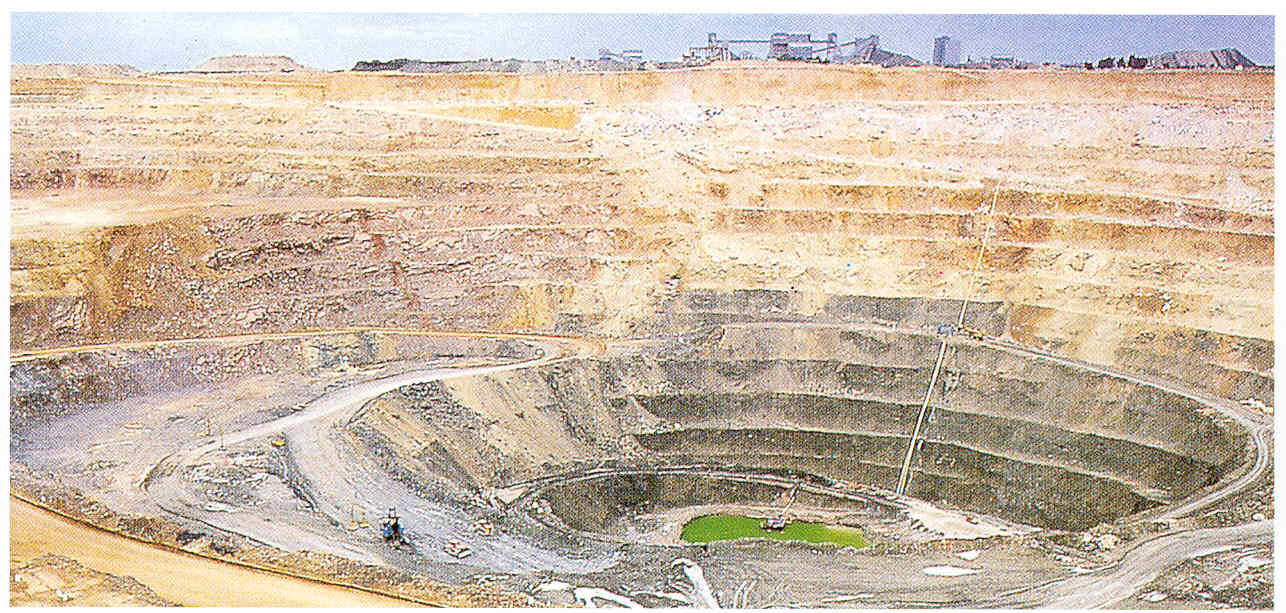| From http://mineralinfocatalogue.brgm.fr/veille |

|
| Here is a kimberlite mine -- where diamonds are found. |
Okay okay, I know I know. Who cares how diamonds are formed or how they travel up to the surface ... we all probably just want to know where to find them! Well, your local jewelry store probably has a fairly large selection. Otherwise, it might get a little more complicated.
One way to find diamonds is to find kimberlite craters. Evidence of these can even be found in Wisconsin according to Andrew Alden of The Diamond Zone (http://geology.about.com/library/weekly/aa021598.htm)! But don't give your hopes up, as these "diamond eruptions" are very rare. So rare in that the last eruption probably took place about 20 million years ago in Australia according to Alden. Even so, the public can search for diamonds in the Crater of Diamonds State Park in Arkansas for a minimal fee. But the downside is that 250 tons of kimberlite must be processed in order to find even a single carat of gem quality diamond (only 20% of diamonds are of gem quality)(http://socrates.berkeley.edu/~eps2/wisc/lecture6.html, 2004).
However, they can also be found in alluvial deposits (deposits in streams) as the diamonds collect at the end of streams. Geological shifts such as the movement of water and glaciers can move diamonds thousands of miles from their original source. Sounds a lot like panning for gold, doesn't it? A lot of the really famous diamonds were found this way. Marine deposits can also contain diamonds. In fact, a 100-mile stretch of beach near the southern part of Namibia is one of the world's largest diamond sources. However, these originated from South Africa and travelled down rivers and such until they reached the Atlantic ocean. This allowed the larger diamonds to sink to the bottom, while the others were left behind on the shoreline by currents and such.
The world's leading producer of diamonds is Australia. However, Russia, Zaire, South Africa, Botswana, Brazil, and Canada are also some of the major producers of diamonds. It is believed that Antarctica could be a rich source of diamonds, but international laws prohibit mining there.
|

